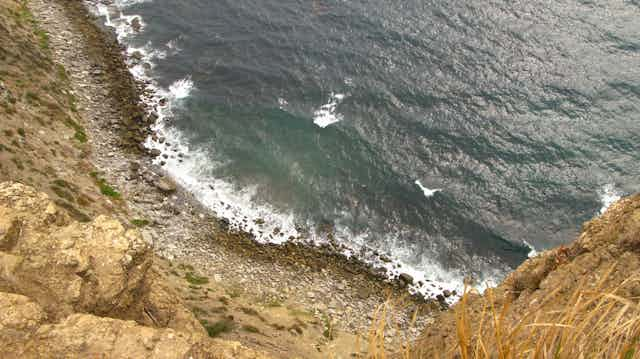Southeast Australia is an ocean warming “hotspot” – a region where temperature at the ocean’s surface is increasing more rapidly than elsewhere. That means this part of Australia is like an outdoor laboratory for understanding nature’s response to climate change.
In research published this week in Nature Climate Change, we found that marine reserves in this regional “hotspot” are important in reducing the effects of climate change on different species.
As oceans warm, subtropical species migrate into temperate regions. This creates new communities where groups of species may meet for the first time.
One species that has already extended its range is the spiny sea urchin. This urchin has grazed down the seaweed beds attached to rocky reefs as it has moved southward, leaving a swath of barren patches in its path.
Habitat reserves protected from fishing within marine reserves appear to deter the urchin. Here, predatory lobsters grow to a size where they can feed on incoming urchins. Marine reserves can also give a diverse set of predatory fish the opportunity to develop. These fish may feed on other warm-water migrants, making it harder to colonise the area.

However, unless there is long-term data, it is virtually impossible to understand how biological communities respond to steady increases in temperature as opposed to year-to-year temperature variability.
We need to know which species are present and how their numbers fluctuate through time. Such data are rare, which makes it hard to know whether protection from fishing will lead to healthier ecosystems that have greater resilience (that is, the capacity to resist and recover following a disturbance).
But we do have one useful data set. Over 20 years, information has been collected on the fishes from the Maria Island Marine National Park in Tasmania and nearby sites open to fishing. This allows us to look into the past to understand what has changed.
With warming water, fishes that eat seaweed have increased in both the protected and fished communities. These herbivorous species are typically limited to more tropical latitudes where warmer temperatures speed their digestion of seaweed. But now they are being seen in areas previously too cool for them.
The proliferation of herbivores has led to greater numbers of species in the region as a whole, and because many of these species have new characteristics, also greater diversity in the functional roles species play in these communities.

Communities in the marine reserve also turned out to be quite resilient. The number and diversity of species in the reserve remained more stable from year to year, as well as across decades, when compared to areas that have been open to fishing.
Reserves also limited colonisation by warm-water species moving into the area. This might be because the reserves supported the return of large-bodied temperate species, such as the blue-throated wrasse, which may feed on new migrants.
Our results have shown us marine reserves have the potential to buffer climate-related biological variability, as well as to limit the spread of range-extending species.
While marine reserves are valuable for creating thriving biological communities, they also help us understand ecological change in the absence of fishing. The new knowledge gained from Maria Island was possible because the long-term data on fish species could be usefully compared against nearby fished areas.
So marine reserves can be a critical reference to help us better understand the interaction between natural changes and human influences.
If our findings play out in other marine reserves, we can be assured that protected habitat networks will enhance the health of our oceans in an era of human influence and climate change.

